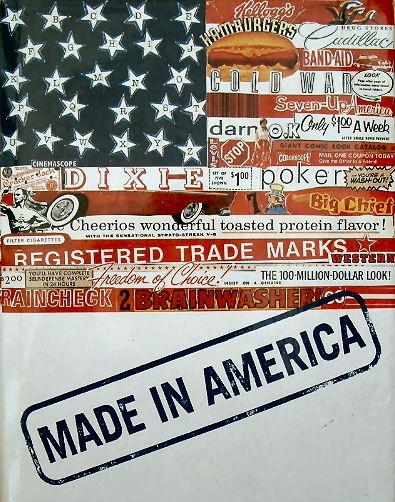Growing up in the 1950s, “Made in Japan” was synonymous with “cheap junk.” Responding to the needs of a world that hungered for more labor-saving devices, Japanese manufacturers shifted to higher-value products and quality improved. Today, “Land of the Rising Sun” companies like Honda boast the hydrogen-powered Clarity automobile and Toto makes high-tech toilets that do everything from chemically analyze your urine to heat water that massages your backside.
 American manufacturing: Can it be Born Again?Photo: scorzonera via FlickrIn those same decades, American manufacturing has gone from the global leader in innovation and quality to a laggard in producing almost anything. Just as Japan reinvented its manufacturing base ahead of massive global economic and technological demand, can “Made in America” once again mean something special — this time ahead of the needs of both the economy and the environment?
American manufacturing: Can it be Born Again?Photo: scorzonera via FlickrIn those same decades, American manufacturing has gone from the global leader in innovation and quality to a laggard in producing almost anything. Just as Japan reinvented its manufacturing base ahead of massive global economic and technological demand, can “Made in America” once again mean something special — this time ahead of the needs of both the economy and the environment?
Many economists argue that manufacturing — and the jobs it creates — is crucial to long-term economic stability. Such reasoning makes sense, because a factory takes time to build and often requires infrastructure investments, like roads, ports, and rail lines, which are also permanent. The beneficial ripple effect includes property taxes pumped into local economies, workers who buy new homes, and utilities that scale up to power the machinery, further enhancing long-term, stable economic growth.
But is there anything left for America to manufacture, given that we have clearly lost our manufacturing mojo to places like Japan for innovation (compare Toyota’s Prius to GM’s Hummer) and China for cost (what product in Walmart is not made in China?)? The answer is yes — if we focus on products for the growing low-carbon economy.
For example, the Lyman-Morse boatyard in Thomaston, Maine has a multi-generational reputation for excellence in boat building, but has seen orders drop during the current recession. They turned their skills to manufacturing ZeroBase, a solar-powered generator that replaces the need for diesel fuel to get 24/7 energy at homes, factories, or remote locations. Controlled via the Internet and built to withstand the same rigors that would normally assault a New England lobster boat, the ZeroBase solar generator is now in use by the military at forward bases in Afghanistan (where refueling traditional generators costs a breathtaking $800 per gallon and risks lives, according to senior Air Force official, and is about to be shipped to Haiti to power field hospitals. Lyman-Morse kept over 100 highly-skilled workers in manufacturing jobs in the process.
In California this month, Cobalt Biofuels cut the ribbon on a factory to make transportation fuels from all kinds of plant materials, including stalks and other biological waste materials. When completed, the factory will employ 1,300 workers and be among the world leaders in producing efficient alternatives to oil. Governor Arnold Schwarzenegger credits his manufacturing equipment tax credit for landing the factory in California and according to a study by the University of California (Berkeley), California’s incentives and low-carbon energy policies will create over 400,000 jobs in the next decade and increase household income by $48 billion — most of that in some type of green tech manufacturing.
The lesson is that the U.S. can revitalize its essential manufacturing sector by focusing on products that deliver the low carbon economy that consumers around the world now hunger for — new ways to use common solar panels, such as ZeroBase; sustainable alternatives to oil, such as Cobalt; and things like energy efficient controls or lighting, to name a few. In essence, make better versions for the future of the products that other countries are making in business-as-usual ways today.
I don’t know what someone in Japan thinks now when they see a product with the label “Made in America,” but I do know what color they would be if we focus on low carbon product manufacturing — green — as in a greener environment, more greenbacks for the U.S. economy, and just plain green with envy.



